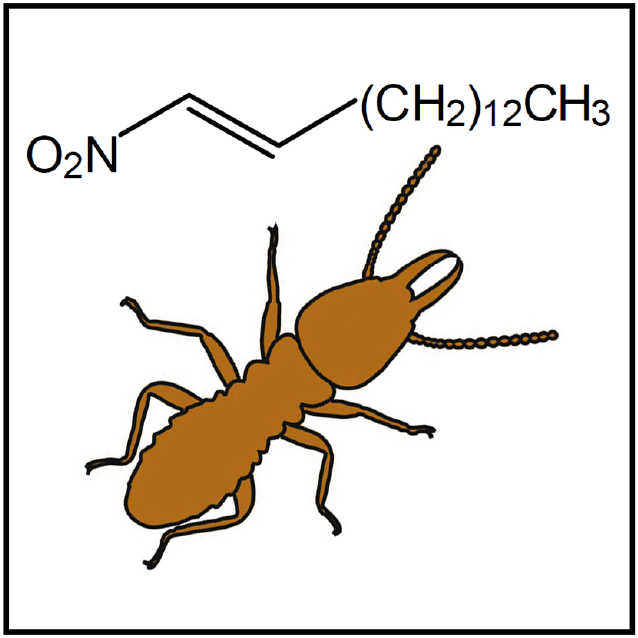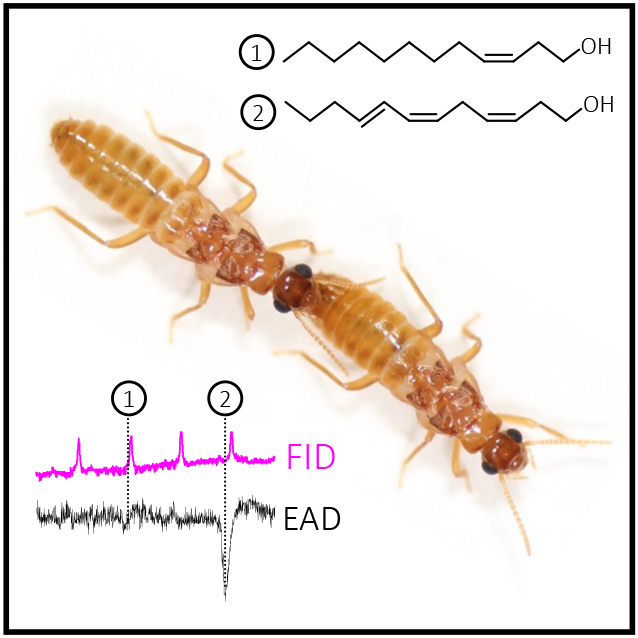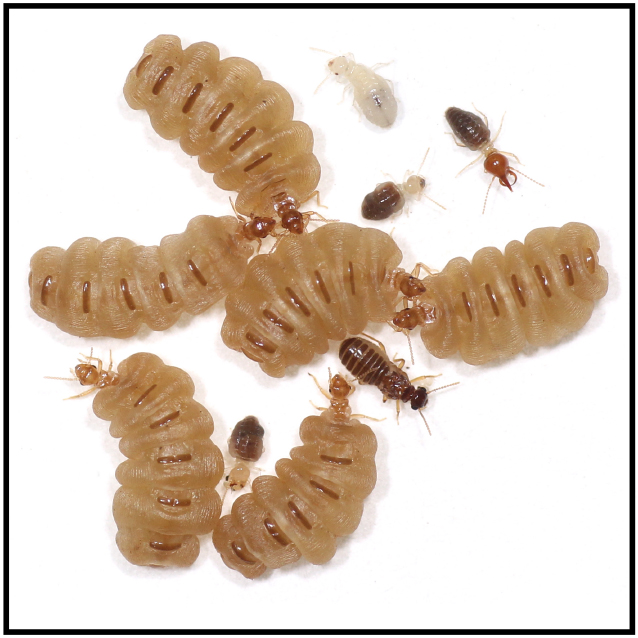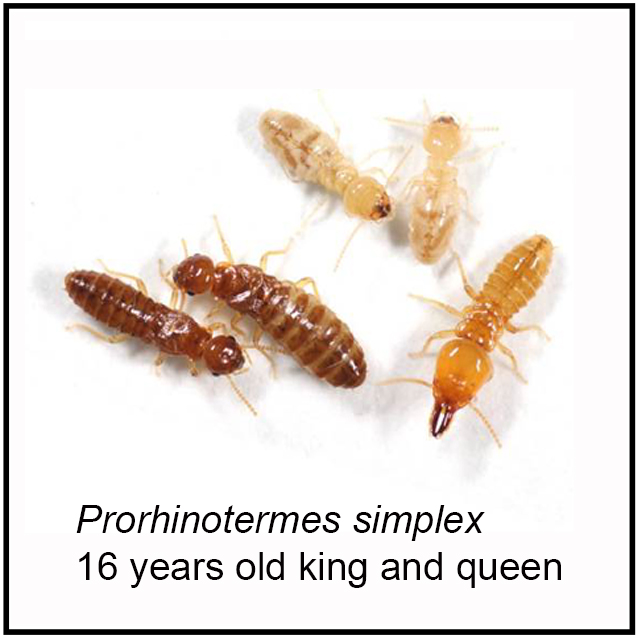Projects
Chemical diversity, function and biosynthesis of soldier-produced defensive chemicals

We study the chemical diversity, function and biosynthesis of exocrine chemicals produced by termite soldiers. Beside descriptions of new structures, we combine our findings on soldier chemistry with molecular phylogenetics for chemical taxonomy and identification of new and cryptic species. In selected cases, we investigate the function of soldier-produced compounds and search for the biosynthetic pathways leading to the termite-produced chemicals and the underlying enzymes, using a combination of in vivo incorporation studies, mass spectrometry-based metabolomics and next-generation sequencing.
Chemical ecology of pheromone communication: from releaser to queen pheromones

Our goal is to verify the hypothesis that the queens of higher termites (Termitidae) maintain their reproductive dominance in the colonies by means of volatile signals (queen pheromones). We focus on higher termites from South-American rainforests, search for queen-produced volatiles and study their impact on the behaviour, development, and reproduction of other colony members.
We study the identity and function of releaser pheromones, such as alarm pheromones, trail-following pheromones and sex-pairing pheromones in understudied lineages to understand the overall chemical diversity and evolution of termite chemical communication.
Mixed modes of reproduction and unusual breeding systems in higher termites

We study the genetic architecture of colonies and populations to unravel the mechanisms of gene flow and strategies of reproduction. Following our discovery of mixed reproductive systems in higher termites, combining the sexual reproduction with thelytokous parthenogenesis, we survey for the occurrence of this unique reproductive system across the phylogenetic diversity of higher termites.
Mechanistic aspects of extraordinary longevity of termite kings and queens

Due to their extreme lifespan, the kings and queens of termites represent excellent models for the studies on somatic maintenance and longevity regulation. We focus in particular on DNA repair and maintenance and on endocrine control of differential lifespan in short-lived (workers, soldiers) and long-lived (kings, queens) colony members.

